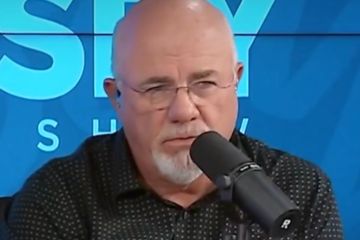Is it time to lock in your rate? Where home loan rates could move next

Home owners have been warned to tread with caution when considering whether to lock in their home loan rates after several out-of-cycle rate rises from major and junior banks.
Rising mortgage prices come at the same time as experts are starting to suggest the Reserve Bank could move in the opposite direction and cut rates, which could prompt banks to change course and follow suit.
NAB on Thursday increased rates on its owner-occupier principal-and-interest loans by 12 basis points, and also hiked by 16 basis points its owner-occupier interest-only loans, investor principal-and-interest loans and investor interest-only loans.
The bank last September announced it would hold its rates steady as long as possible, pledging to restore trust with existing customers, in the wake of hikes ranging from 14 to 16 basis points by rivals Westpac, Commonwealth Bank and ANZ.
The move by the major lender follows a string of hikes from second-tier lenders in recent weeks, as the banks face higher funding costs.
Some 13 junior lenders have lifted rates on some products by up to 20 basis points since December, including Macquarie Bank, ME Bank and Bank Australia, analysis by comparison platform finder.com.au found.
“With the RBA cash rate stagnant and the costs of international borrowing increasing, many banks will increase their lending rates,” Finder insights manager Graham Cooke said.
But in a competitive market, other lenders may “seize the opportunity” to get an edge over their rivals and reduce rates, he said.
Citi Bank and IMB Bank have recently lowered their mortgage pricing.
But even as the cost of funding for banks goes up, economists have begun predicting the Reserve Bank may need to move the other way and lower the official cash rate to boost the sagging property market and lagging economy.
Weak inflation, downward revisions to GDP growth, slipping consumer confidence, falling dwelling prices and a slower global economy will weigh on the Reserve Bank’s outlook.
Mr Cooke said home owners looking for the lowest rate should consider holding off locking in their mortgage rate, in case the RBA cuts later this year.
“If you’re worried about a rate hike, get on the front foot and look at a fixed-rate mortgage, but keep in mind that a growing number of economists in our monthly forecast predict the next RBA movement may be a rate cut,” he said.

Chris Foster-Ramsay, principal finance broker at Foster Ramsay Finance, said borrowers thinking about whether to fix their rate should consider the features of the individual loan product, aside from the interest rate outlook.
“In the case where there’s a super-cheap fixed rate for two or three years, the benefits may seem amazing,” he said.
“But you really have to take into consideration the other side as well, which is potentially higher break costs [and] potentially restrictive refinancing options during the fixed-rate period.”
Someone thinking about locking in their mortgage rate would be unwise to fix 100 per cent of their loan, he said.
Instead, several of his clients keep 30 to 40 per cent of their loan as a variable rate, which allows them to make additional repayments on the variable component and pay down their debt faster.
Director of 40Forty Finance Will Unkles said the banks often felt forced to raise rates on existing loans to cover their costs when the international banks they rely on for funding increase their own pricing.
“They need to claw back some of their profits and they’re not going to do it on their new loans, only their existing loans,” he said.
But trying to game the system and lock rates in at the most opportune time wasn’t always the best idea, Mr Unkles added.
“It’s more about your life situation rather than trying to steal a good deal,” he said. “You can’t win. You just need to make the most of your current situation.”
PwC chief economist Jeremy Thorpe said an RBA rate cut was possible, but he did not personally predict one as this would leave the central bank without options if domestic economic conditions worsened.
“It may be prudent for the RBA to consider holding off as long as possible just so there’s more wriggle room,” he said.
“If the worst ever occurred they’re not left with any headroom.”
| Banks that have raised their rates since December |
| NAB |
| Bank Australia |
| Bank of Queensland |
| Bankwest |
| Credit Union SA |
| Horizon Credit Union |
| ING |
| Macquarie Bank |
| ME |
| Mystate |
| Newcastle Permanent Building Society |
| Teachers Mutual Bank |
| UniBank |
| Virgin Money |
We recommend
Three signs you are in mortgage prison and how to break free
How long does it really take to get a home loan these days?
We thought you might like
States
Capital Cities
Capital Cities - Rentals
Popular Areas
Allhomes
More







